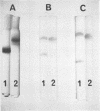Abstract
Initial studies, by using polyacrylamide gel electrophoresis in the presence of sodium dodecyl sulfate (SDS), led to the attractive hypothesis that the cholera exo-enterotoxin (choleragen) consisted of two noncovalently linked peptides of 56,000 and 28,000 molecular weight. The spontaneous toxoid (choleragenoid) appeared to be identical with the 56,000 molecular weight piece. The results appeared to be very similar to those obtained recently with diphtheria toxin. However, they did not agree with earlier studies which indicated that both the toxin and the toxoid consisted of subunits of approximately 14,000 molecular weight. More extensive investigation, by using gel filtration with 3H-labeled toxin, ultracentrifugation, and immunologic studies, failed to support the observations of SDS-gel electrophoresis, suggesting the existence of a 28,000 molecular weight fragment which is unique to the toxin. The results were more compatible with our earlier observations regarding subunit composition. It is concluded that these proteins are relatively resistant to dissociation by SDS and need to be unfolded by prior treatment for more complete dissociation into subunits. Indirect evidence suggests that the 28,000 fragment may be a dimer, or larger aggregate, of a smaller subunit which can be integrated in the formation of choleragenoid. It is also evident that caution should be exercised in the interpretation of results, however pleasing, obtained only by SDS-gel electrophoresis.
Full text
PDF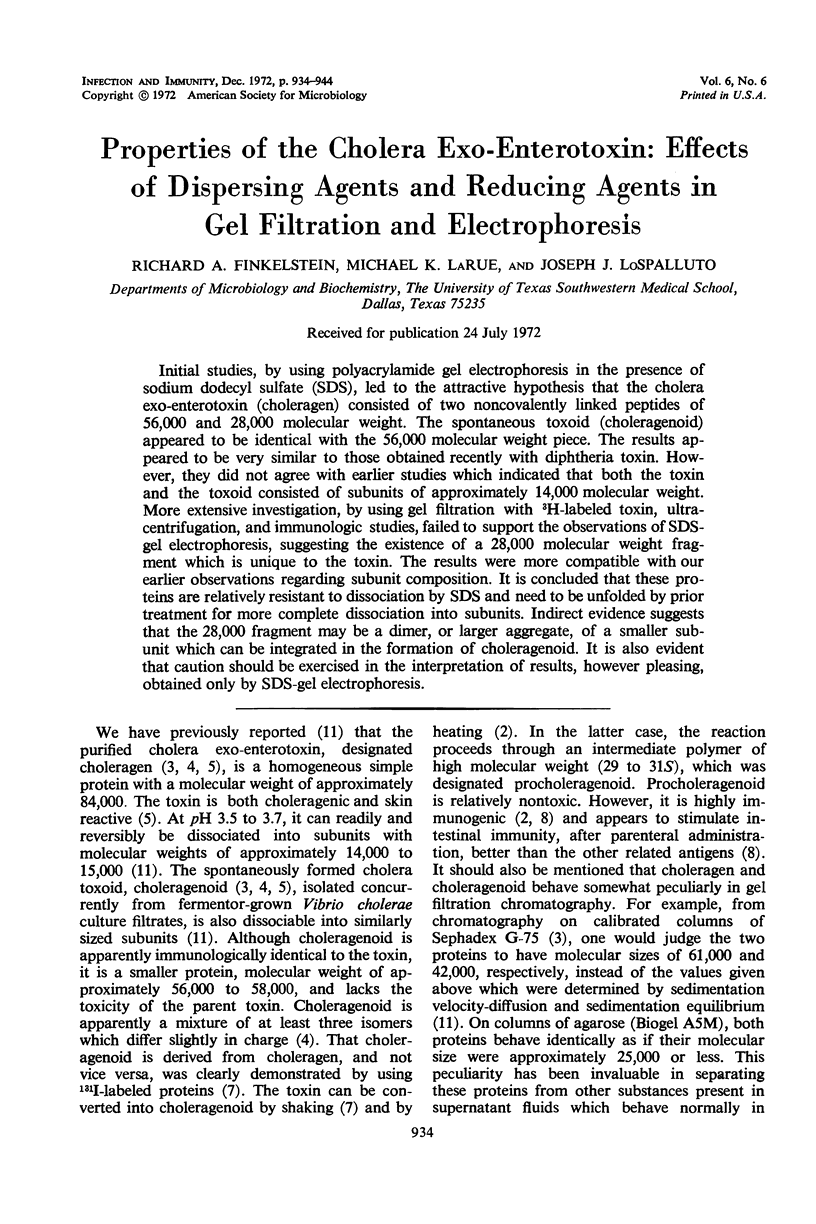
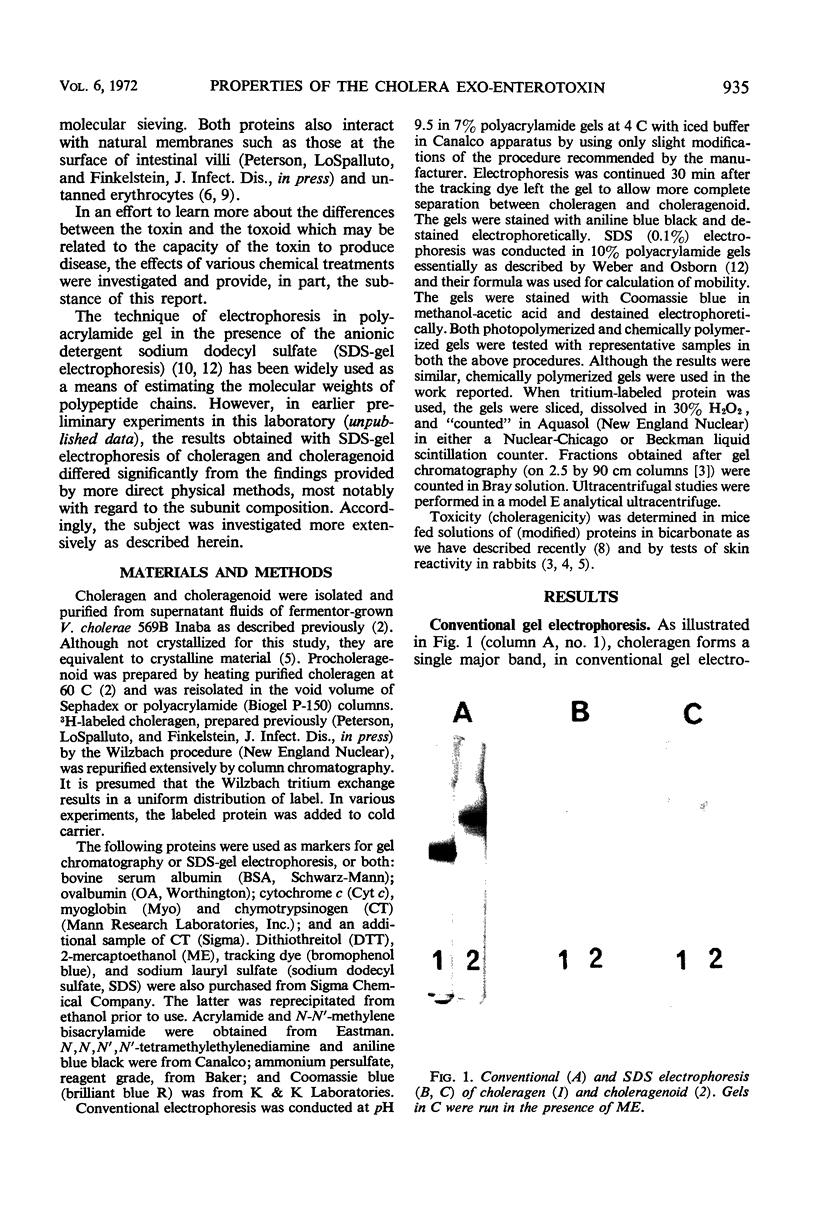
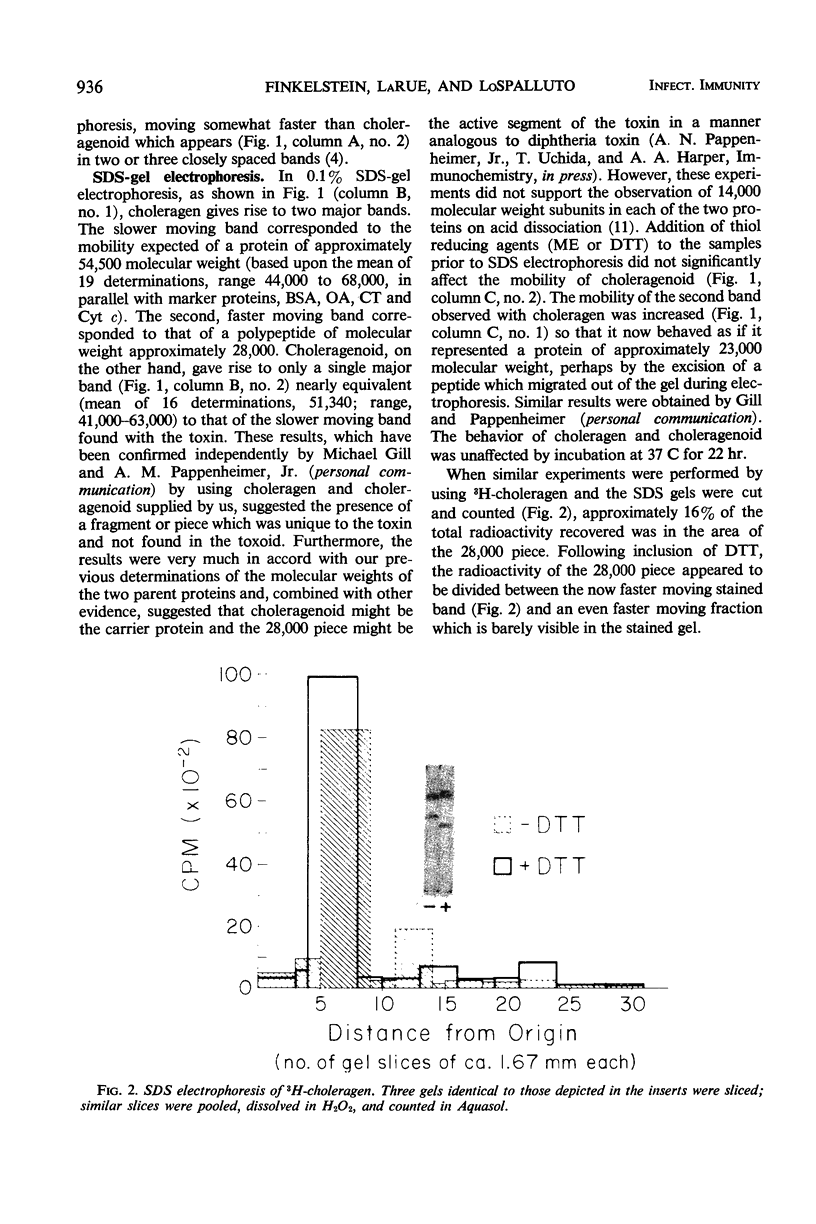
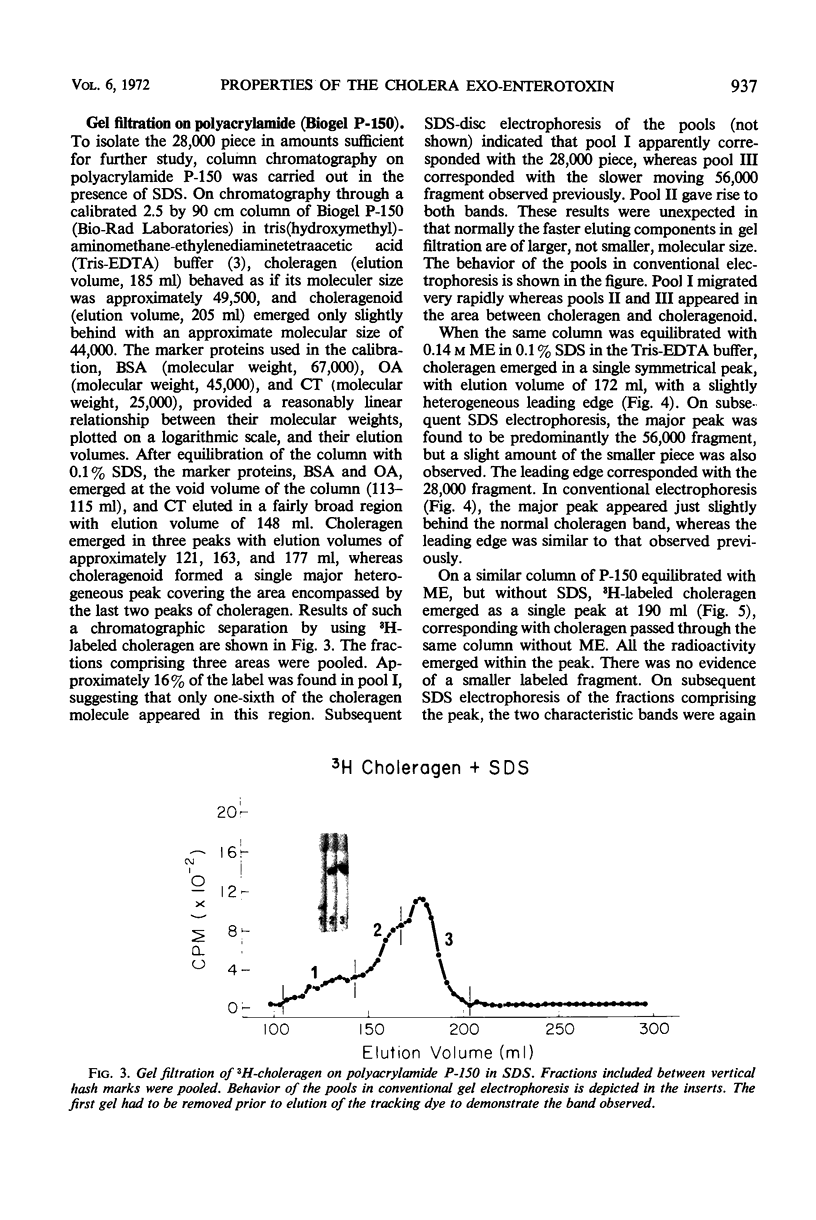
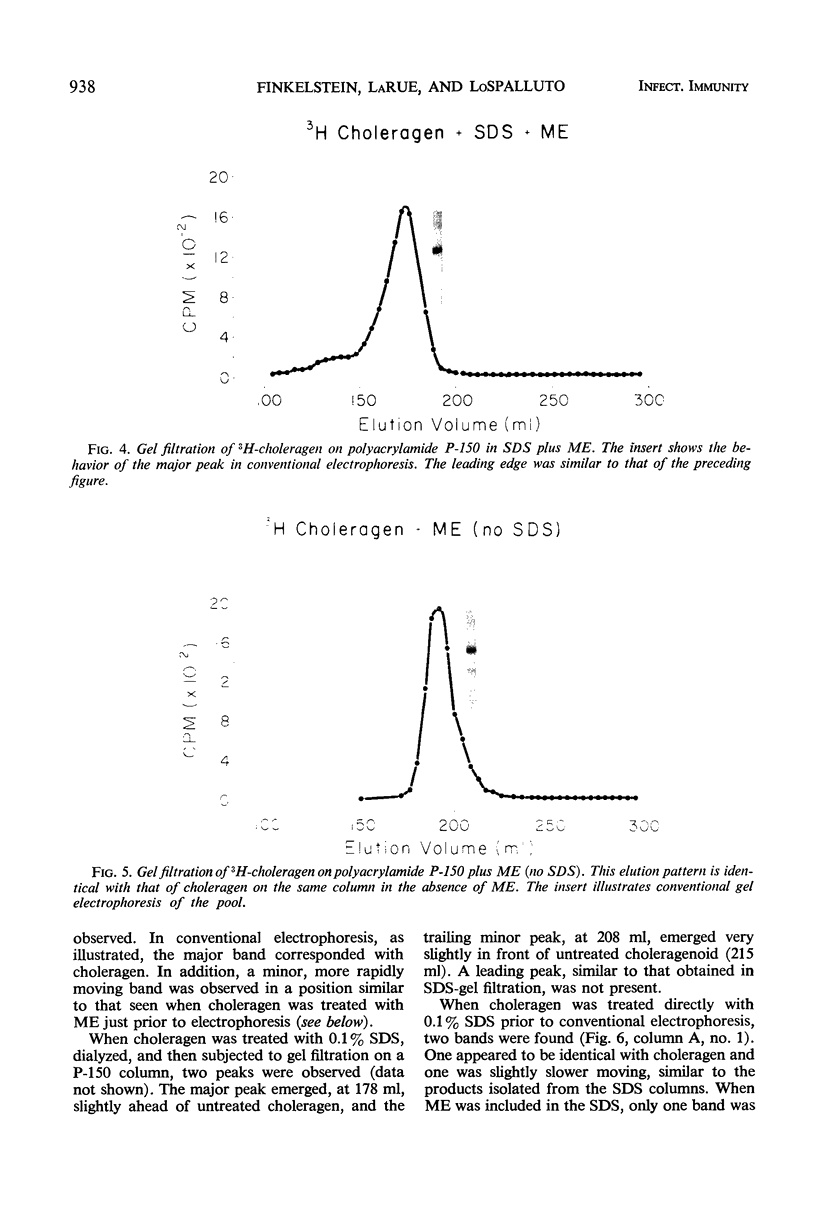
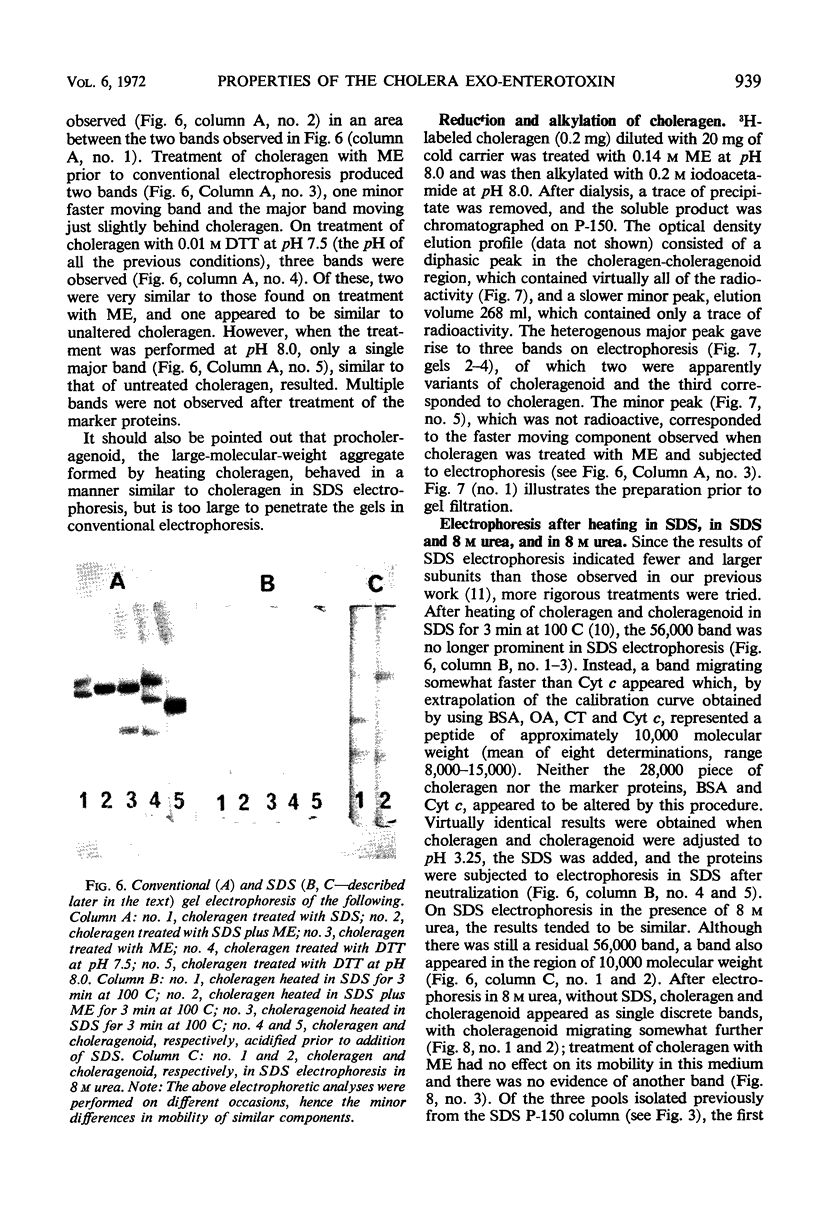
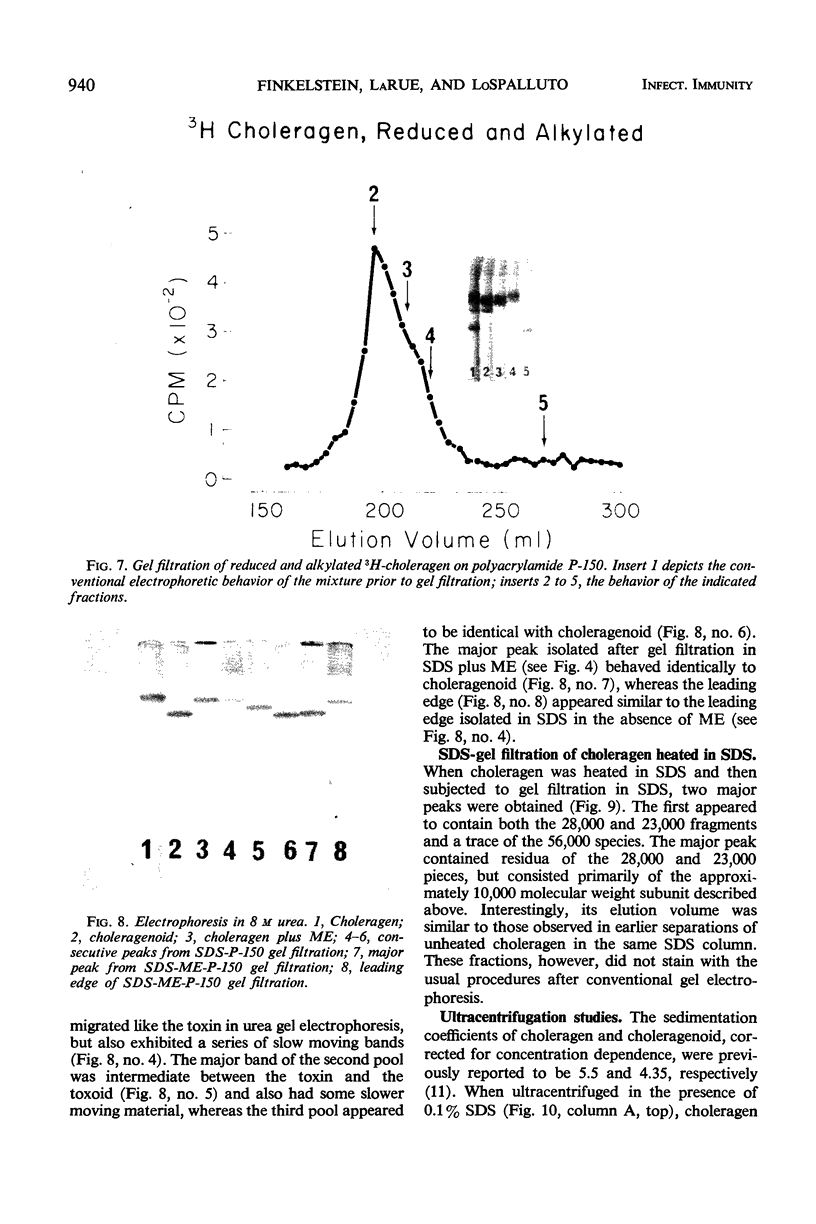
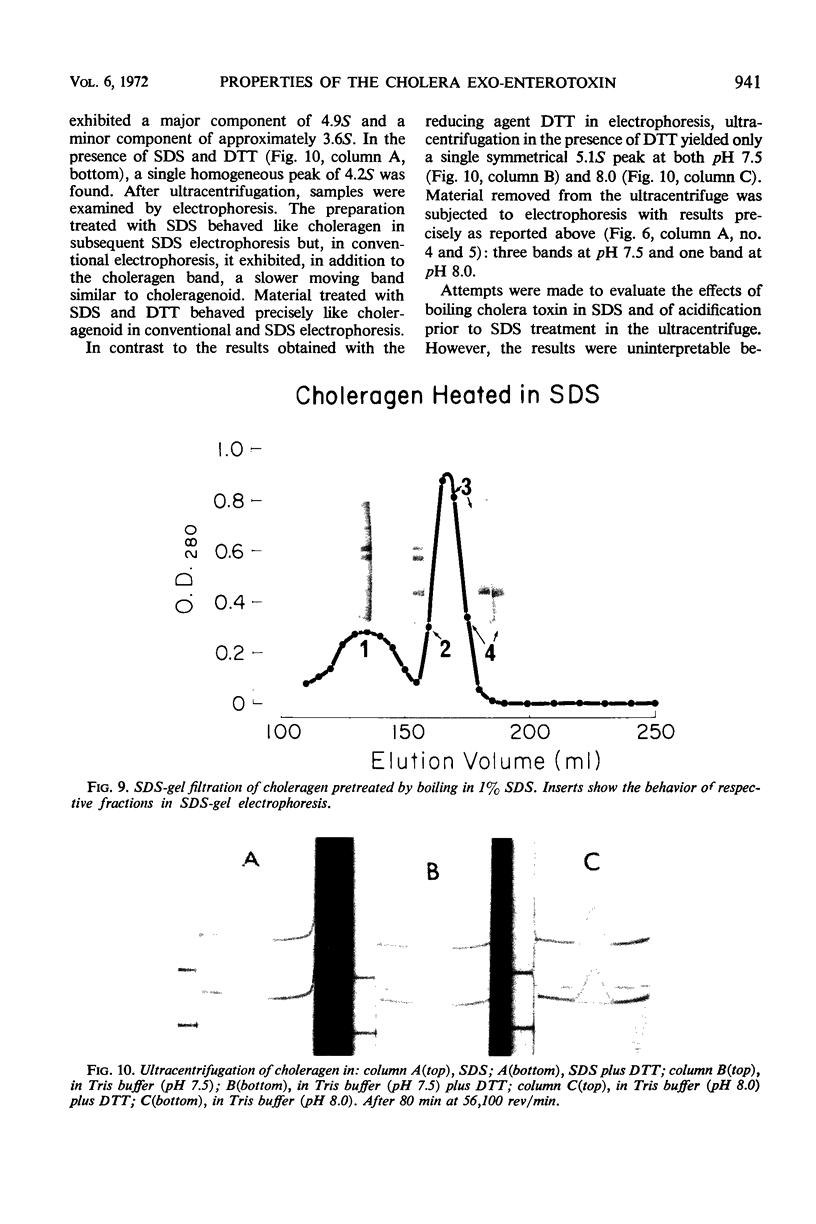
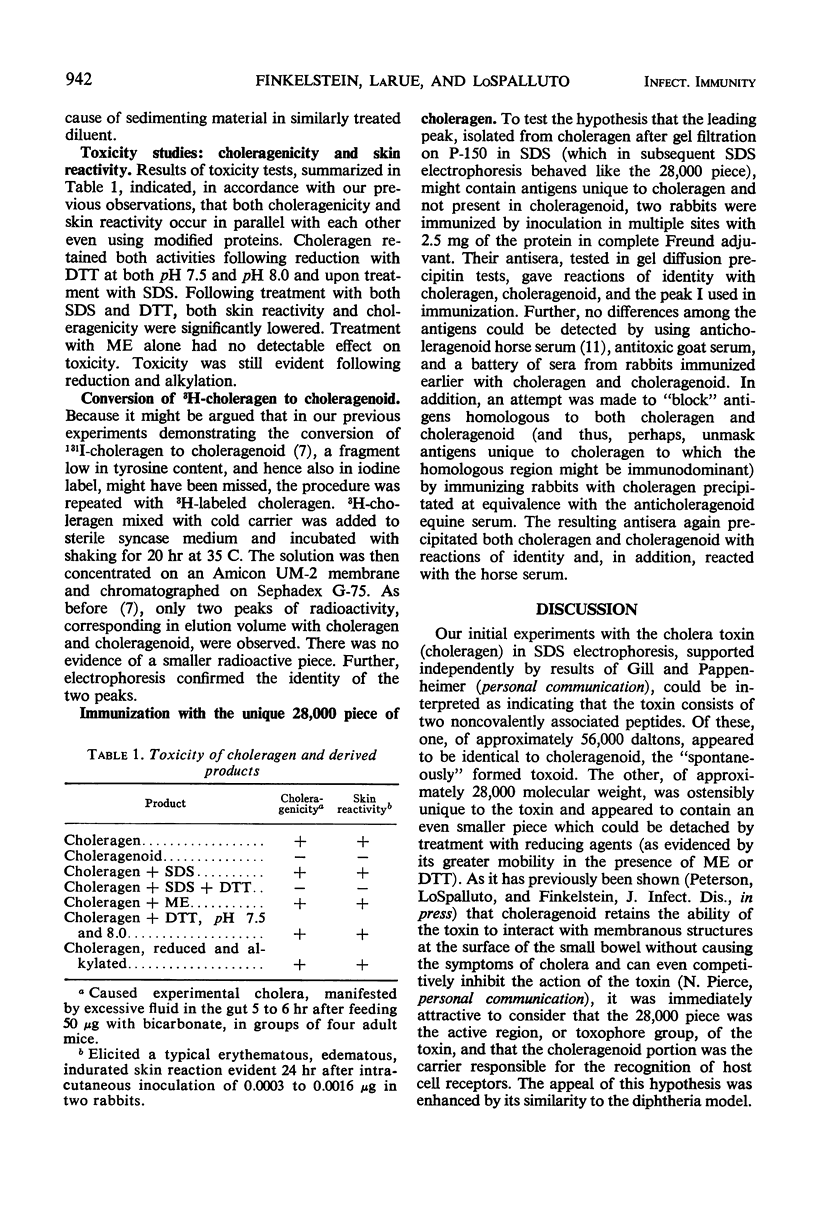
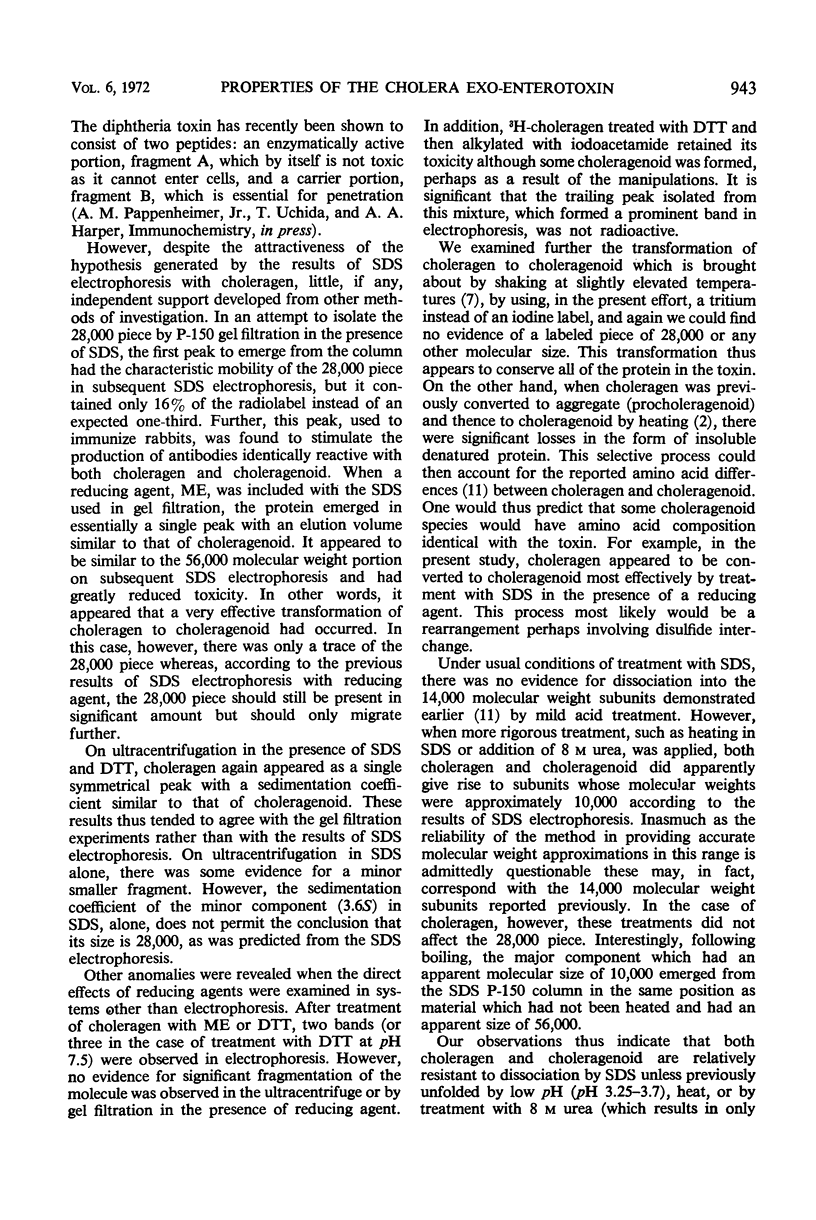
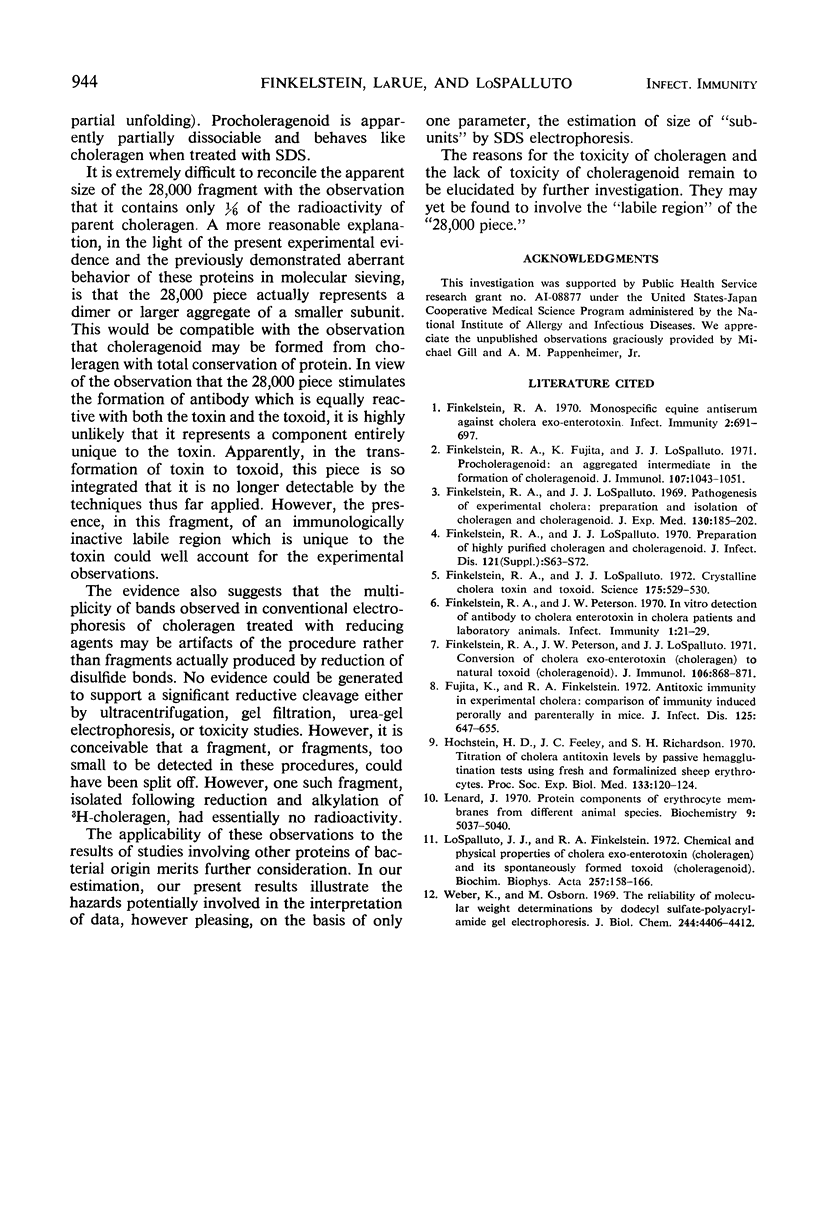
Images in this article
Selected References
These references are in PubMed. This may not be the complete list of references from this article.
- Finkelstein R. A., Fujita K., LoSpalluto J. J. Procholeragenoid: an aggregated intermediate in the formation of choleragenoid. J Immunol. 1971 Oct;107(4):1043–1051. [PubMed] [Google Scholar]
- Finkelstein R. A., LoSpalluto J. J. Crystalline cholera toxin and toxoid. Science. 1972 Feb 4;175(4021):529–530. doi: 10.1126/science.175.4021.529. [DOI] [PubMed] [Google Scholar]
- Finkelstein R. A., LoSpalluto J. J. Pathogenesis of experimental cholera. Preparation and isolation of choleragen and choleragenoid. J Exp Med. 1969 Jul 1;130(1):185–202. doi: 10.1084/jem.130.1.185. [DOI] [PMC free article] [PubMed] [Google Scholar]
- Finkelstein R. A. Monospecific equine antiserum against cholera exo-enterotoxin. Infect Immun. 1970 Dec;2(6):691–697. doi: 10.1128/iai.2.6.691-697.1970. [DOI] [PMC free article] [PubMed] [Google Scholar]
- Finkelstein R. A., Peterson J. W. In vitro detection of antibody to cholera enterotoxin in cholera patients and laboratory animals. Infect Immun. 1970 Jan;1(1):21–29. doi: 10.1128/iai.1.1.21-29.1970. [DOI] [PMC free article] [PubMed] [Google Scholar]
- Finkelstein R. A., Peterson J. W., Lospalluto J. J. Conversion of cholera exo-enterotoxin (choleragen) to natural toxoid (choleragenoid). J Immunol. 1971 Mar;106(3):868–871. [PubMed] [Google Scholar]
- Fujita K., Finkelstein R. A. Antitoxic immunity in experimental cholera: comparison of immunity induced perorally and parenterally in mice. J Infect Dis. 1972 Jun;125(6):647–655. doi: 10.1093/infdis/125.6.647. [DOI] [PubMed] [Google Scholar]
- Hochstein H. D., Feeley J. C., Richardson S. H. Titration of cholera antitoxin levels by passive hemagglutination tests using fresh and formalinized sheep erythrocytes. Proc Soc Exp Biol Med. 1970 Jan;133(1):120–124. doi: 10.3181/00379727-133-34421. [DOI] [PubMed] [Google Scholar]
- Lenard J. Protein components of erythrocyte membranes from different animal species. Biochemistry. 1970 Dec 8;9(25):5037–5040. doi: 10.1021/bi00827a032. [DOI] [PubMed] [Google Scholar]
- Lospalluto J. J., Finkelstein R. A. Chemical and physical properties of cholera exo-enterotoxin (choleragen) and its spontaneously formed toxoid (choleragenoid). Biochim Biophys Acta. 1972 Jan 26;257(1):158–166. doi: 10.1016/0005-2795(72)90265-6. [DOI] [PubMed] [Google Scholar]
- Weber K., Osborn M. The reliability of molecular weight determinations by dodecyl sulfate-polyacrylamide gel electrophoresis. J Biol Chem. 1969 Aug 25;244(16):4406–4412. [PubMed] [Google Scholar]



